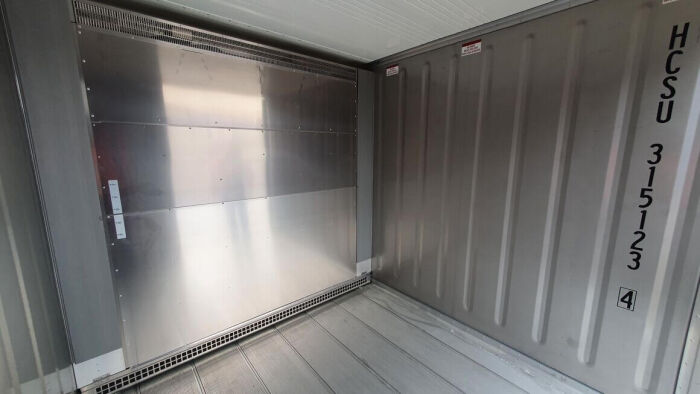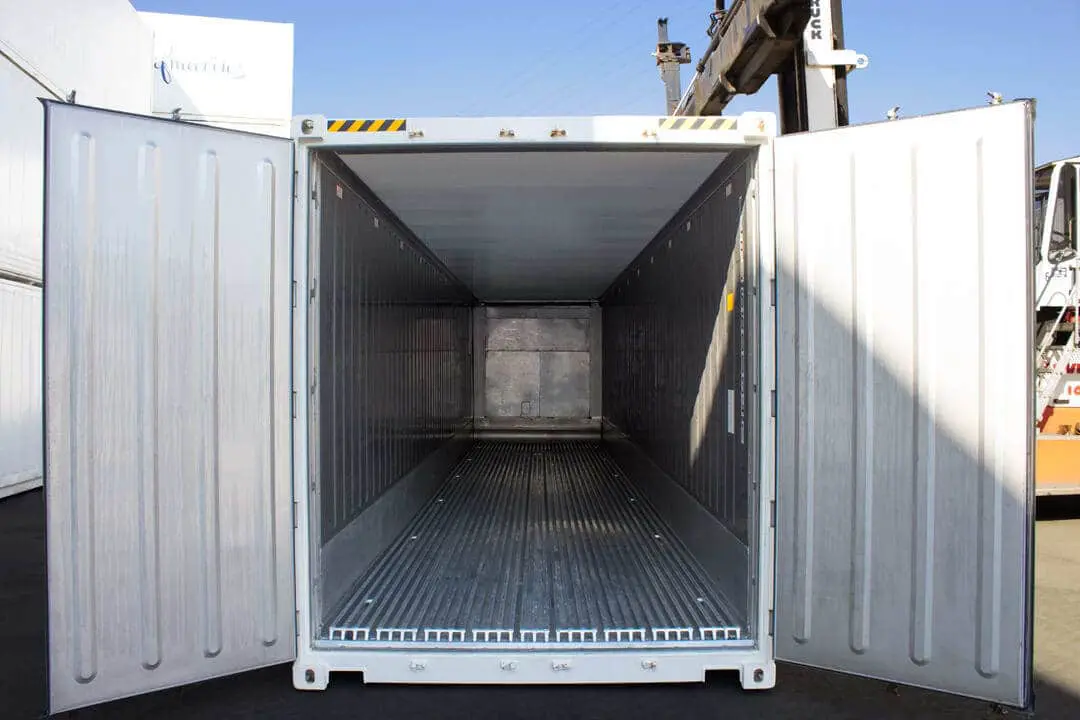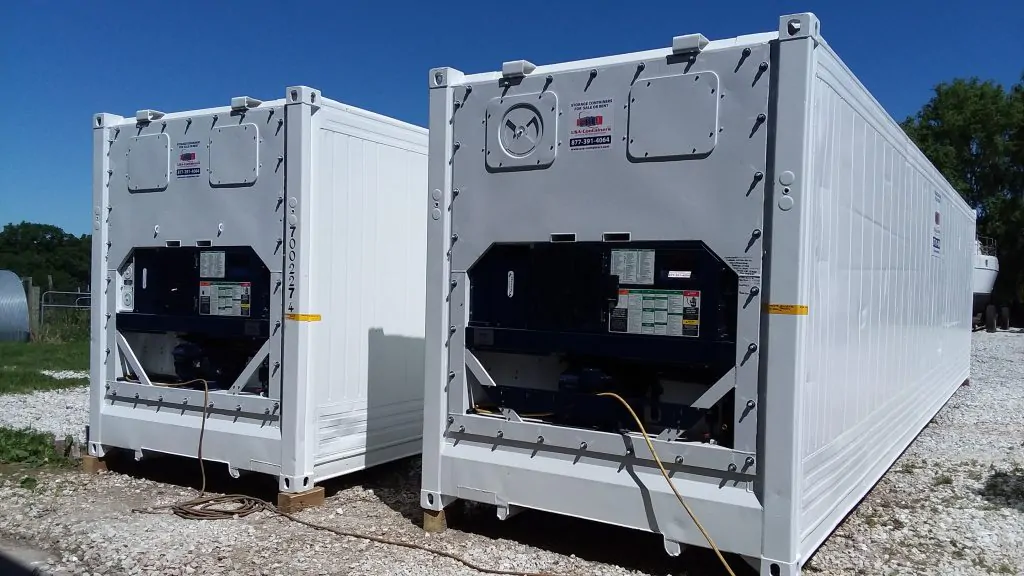In the global shipping industry, reefer containers (short for “refrigerated containers”) play a crucial role in transporting perishable goods such as fruits, vegetables, dairy products, pharmaceuticals, and even flowers. These containers are designed to maintain a specific temperature range to ensure the quality and safety of the cargo throughout the journey. Understanding the specifications of reefer shipping containers is essential for businesses that rely on the cold chain to move their products across the world.
In this blog post, we’ll dive deep into the specifications of reefer shipping containers, explaining their sizes, temperature control capabilities, power requirements, and much more. This comprehensive guide will help you understand everything you need to know about reefer containers, ensuring your products arrive in perfect condition, no matter the destination. Understanding Reefer Shipping Container Specifications
1. Reefer Container Sizes and Dimensions
Reefer containers come in various sizes, but the most common are the 20ft and 40ft containers. These sizes align with standard shipping container dimensions, making them easy to transport via road, rail, or sea.
- 20ft Reefer Container
- External Dimensions: 20ft x 8ft x 8.5ft
- Internal Dimensions: Approximately 17.9ft x 7.5ft x 7.5ft
- Capacity: 28 cubic meters (around 1000 cubic feet)
- Payload Capacity: Around 27,000 kg (59,500 lbs)
- 40ft Reefer Container
- External Dimensions: 40ft x 8ft x 8.5ft
- Internal Dimensions: Approximately 37.8ft x 7.5ft x 7.5ft
- Capacity: 57 cubic meters (around 2000 cubic feet)
- Payload Capacity: Around 30,000 kg (66,100 lbs)
Both 20ft and 40ft containers are available in “high cube” variants, offering an extra foot of height (9.5ft) for increased cargo space.
2. Temperature Control and Range

Reefer containers are equipped with powerful refrigeration units capable of maintaining a wide range of temperatures, from as low as -25°C (-13°F) to as high as +25°C (+77°F). This versatility makes them suitable for transporting a broad range of products, from frozen meats and seafood to fresh produce and pharmaceuticals.
- Temperature Range: -25°C to +25°C (-13°F to +77°F)
- Setpoint Accuracy: Reefer containers can maintain the desired temperature within a narrow range, typically within ±0.5°C (±0.9°F).
Some advanced reefer containers offer multi-temperature zones, allowing different sections of the container to be set at different temperatures, ideal for mixed cargo loads.
3. Insulation and Airflow
The insulation in reefer containers is critical for maintaining the internal temperature. The walls, roof, and floor are typically lined with a layer of polyurethane foam insulation, which helps reduce heat transfer from the external environment. Understanding Reefer Shipping Container Specifications
- Insulation Type: Polyurethane foam
- Thickness: Typically 60-100mm (2.4-3.9 inches)
Airflow within the container is also essential for maintaining an even temperature throughout the cargo. Most reefer containers use a “bottom air delivery” system, where chilled air is distributed from the floor and recirculates back through the ceiling.
- Airflow System: Bottom air delivery
- Airflow Rate: 3,500 to 6,000 cubic meters per hour, depending on the model
4. Power Requirements
Reefer containers require a constant power supply to operate the refrigeration unit. This power can be supplied by the ship’s generators (when at sea), by an external power source (when on land), or by diesel-powered generator sets (gensets) when the container is in transit by road or rail.
- Voltage: 380-460V AC, 3-phase, 50/60Hz
- Power Consumption: 4-6 kW, depending on the set temperature and external conditions
In the event of a power outage, most reefer units are equipped with battery backups or emergency power systems to maintain the temperature for a limited period.
5. Monitoring and Control Systems
Modern reefer containers are equipped with sophisticated monitoring and control systems that allow operators to track and adjust the container’s internal conditions remotely. These systems provide real-time data on temperature, humidity, and other critical parameters, ensuring the cargo remains within the desired specifications throughout the journey.
- Monitoring Systems: Integrated with GPS and GSM for remote access
- Control Interface: Digital displays with user-friendly interfaces
- Alarm Systems: Alerts for temperature deviations, power loss, or system malfunctions
Some containers also feature data logging capabilities, allowing operators to review historical data and ensure compliance with regulatory requirements.
6. Certifications and Compliance
Reefer containers must meet stringent international standards to ensure they are safe and effective for transporting perishable goods. Key certifications and compliance standards include:
- ISO 1496-2: Specifies requirements for thermal containers, including reefer containers
- ATP Certification: Agreement on the International Carriage of Perishable Foodstuffs, ensuring containers meet specific thermal and refrigeration standards
- HACCP Compliance: Ensures containers are suitable for transporting food products, meeting Hazard Analysis Critical Control Point (HACCP) guidelines
7. Common Applications of Reefer Containers
Reefer containers are used across a wide range of industries, with some of the most common applications including:
- Food and Beverage Industry: Transporting fresh produce, dairy products, meat, seafood, and beverages
- Pharmaceutical Industry: Shipping temperature-sensitive medications, vaccines, and other pharmaceutical products
- Floriculture: Moving flowers and plants that require specific temperature and humidity conditions
- Chemical Industry: Transporting chemicals that need to be kept at a stable temperature to maintain their properties
Conclusion
Understanding Reefer Shipping Container Specifications is essential for businesses that depend on the cold chain to move perishable goods. From their dimensions and temperature control capabilities to their power requirements and monitoring systems, reefer containers are complex and highly specialized tools designed to ensure your products arrive in perfect condition, no matter where they’re headed.
By staying informed about the latest advancements in reefer container technology and adhering to international standards, businesses can optimize their supply chain operations and ensure the safety and quality of their cargo. Whether you’re shipping fresh produce across the country or pharmaceuticals around the world, choosing the right reefer container can make all the difference.
Read More
40ft Flat Rack Container for Sale Malaysia
20ft Refrigerated Container For Sale Malta
Reefer Containers for Sale Online Papua New Guinea
What is a reefer container? Facts and dimensions



